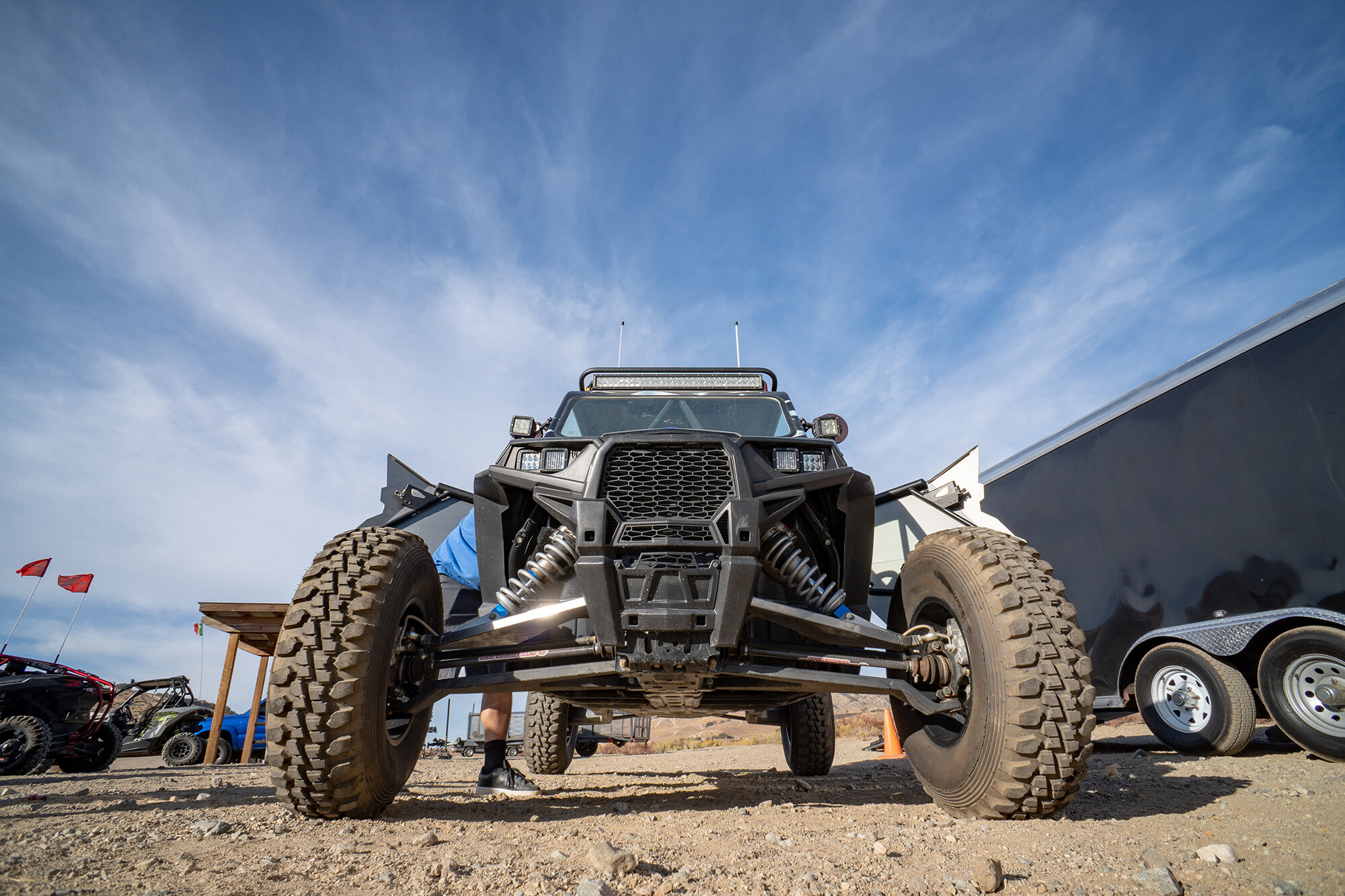From compact skid steers and mini-excavators to massive dozers and off-highway trucks, construction...
Engineering Comfort: How Air Conditioning is Becoming a Must-Have for Side-by-Side Off-Roading


Side-by-side vehicles are built with the power and durability to go almost anywhere. Whether they’re trekking through dense forests, hauling gear on a farm, or tearing across endless desert sands, these versatile machines aren’t afraid to get their tires dirty.
Also known as UTVs, SxS, and off-road utility carts, vehicle makers like Polaris, Can-Am, John Deere, Kubota, and many others have long been trusted to handle nature’s extremes during outdoor work and play. What they haven’t always been known for? A comfortable ride. And that’s understandable. When you’re engineering a machine to power through mud, snow, and rocky trails, creature comforts tend to take a back seat.
But that’s changing. As more industries use enclosed cabs year-round and more riders want a comfortable off-road experience, heating and air conditioning are now expected features in top-tier SxS models.
Why Do Side-by-Sides Need Air Conditioning and Heating?
Brands that integrate A/C into their flagship models are tapping into growing demand, turning climate control into a key selling point rather than an afterthought. But what’s driving this shift? The two biggest factors are:
- A greater focus on safety and efficiency for workers
- Changing consumer expectations in the recreational market
Work Vehicles Need Year-Round Climate Control
Side-by-side vehicles are more than just weekend trail machines. They’re indispensable workhorses in oil fields, forestry, emergency response, and municipal maintenance. Built for rugged performance in extreme environments, they help crews get the job done, no matter the conditions.
- Agriculture and Ranching: Farmers and ranchers need to use UTVs all year round. A reliable HVAC system ensures they can work in the sweltering summer heat or freezing winter temperatures while keeping drivers safe and productive.
- Construction and Industrial Use: Crews rely on enclosed SxS vehicles to transport equipment and personnel on job sites. Built-in climate control improves worker safety and productivity, especially in remote areas with limited access.
- Emergency and Utility Services: First responders, search-and-rescue teams, and utility workers use UTVs in conditions where climate control can help save lives.
In these industries, enclosed cabs with heating and air conditioning aren’t about luxury. They’re essential for safety and efficiency. As demand for year-round performance grows, side-by-side manufacturers are continuously innovating climate control systems to meet real-world challenges and ensure their vehicles can handle the toughest jobs in the harshest environments.
The Recreational Market Expects More
Adventure-seeking outdoor enthusiasts are starting to expect more than just power and performance from their side-by-sides. They want a complete off-road experience that includes year-round comfort. Just as climate control has become a standard feature in trucks and SUVs, it’s now an expectation in high-end UTVs.
For example, some premium models will now deliver top-tier horsepower, suspension, and handling, but no longer force riders to sacrifice comfort. From blistering desert trails to snow-packed backcountry routes, HVAC is becoming a key feature for those who want to ride in any condition.
- Desert Riding: High-performance UTVs designed for sand dunes and open trails need cooling systems to keep drivers from overheating in extreme temperatures.
- Winter Off-Roading: Riders in snowy climates want heated cabs to extend their riding season.
- Luxury and Convenience: Just as automotive buyers expect climate control as standard, off-road riders are increasingly choosing these features for their ATVs, snowmobiles, and other outdoor pleasure crafts.
Riders want adventure without compromise, and side-by-side manufacturers are stepping up to deliver high-performance climate control systems that match the rugged capabilities of their vehicles.
How MCC Designs A/C for Off-Road
To stay ahead in a competitive market, side-by-side manufacturers are integrating high-performance climate control systems directly into their vehicle designs. But what does that really mean?
Designing a rugged climate control system is one thing. Doing so within the tight constraints of a side-by-side without sacrificing performance, airflow, or efficiency is another challenge entirely. That’s why OEMs turn to MCC for expertly engineered HVAC solutions that seamlessly integrate into their vehicle platforms, ensuring optimal performance in even the harshest conditions.
Benefits of MCC’s purpose-built climate control systems:
- Fully customized solutions built to OEM specifications
- Rugged designs that withstand constant vibration, dust, and moisture
- Compact and efficient systems optimized for space constraints
- Industry-leading quality assurance through advanced testing and validation
Custom Air Conditioning and Heating Solutions for OEMs
MCC works directly with leading side-by-side manufacturers to make air conditioning and heating systems and components that fit inside 4x4s and other off-road vehicles with enclosed cabs. This gives OEMs the freedom to offer factory-installed, in-dash air conditioning and heating designed specifically for their vehicle platforms.
Rugged and Reliable Design
Side-by-side air conditioning systems must endure constant vibration, exposure to dust and moisture, and extreme temperature swings that are common to off-road vehicles. MCC’s off-road solutions are engineered for durability, ensuring long-term reliability even in the toughest environments.
Compact and Efficient
With limited cabin space, every component of a side-by-side’s air conditioning system must be engineered for maximum efficiency. That’s why MCC designs compact yet powerful HVAC units that deliver the best heating and cooling without taking up valuable room, helping manufacturers preserve the vehicle’s sleek design while ensuring maximum comfort for riders.
Advanced Testing and Validation
MCC puts every HVAC system through rigorous real-world testing to ensure it performs under extreme heat, freezing cold, heavy dust, and rough terrain. By validating performance in actual operating conditions, MCC ensures its HVAC solutions meet the high expectations of OEMs and end users alike.
50-Year Legacy of Expertise
MCC’s HVAC experts are backed by decades of experience designing heating and cooling systems specifically for side-by-sides. As a leader in climate control for compact off-road vehicles, our purpose-built solutions meet the needs of manufacturers looking to deliver high performance without compromise.
The Future of HVAC in Side-by-Sides
The shift toward fully enclosed, climate-controlled side-by-sides is accelerating, which is why manufacturers are making climate control a standard feature as a competitive advantage. As demand rises, the industry is focusing on three key areas of innovation:
- Smart climate control systems: Automated temperature regulation, touch-screen controls, and connectivity with in-vehicle displays are becoming more common.
- Energy-efficient HVAC for electric side-by-sides: As electric and hybrid UTVs become more common, HVAC systems will need to be optimized for low power consumption to maximize battery range.
- Integration with enclosed cabs: More brands will follow the lead of Polaris, Can-Am, and John Deere by designing fully enclosed cab models with built-in heaters and air conditioners as a standard feature.
As climate control continues to evolve, side-by-side manufacturers that embrace these innovations will set the industry standard for comfort, efficiency, and all-season capability, without compromising the rugged performance riders expect.
Ready to Learn More?
Interested in equipping your side-by-side lineup with industry-leading climate control? Contact MCC today to discuss custom solutions for turning creature comforts into essential off-road performance. After all, just because the terrain is rough doesn’t mean the ride has to be.
March 10, 2025



